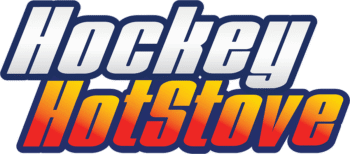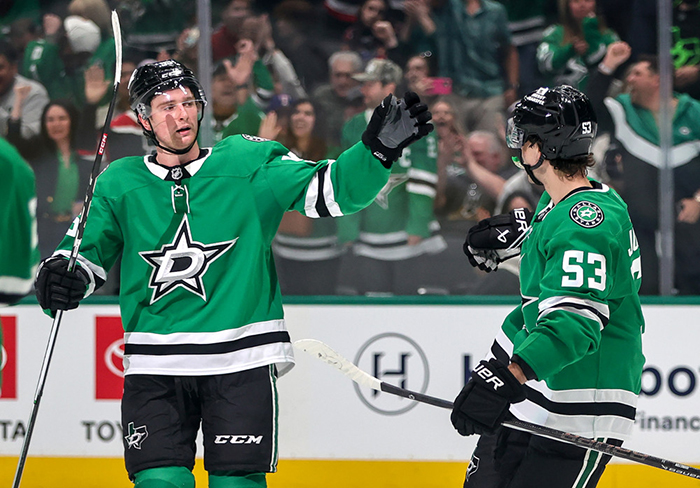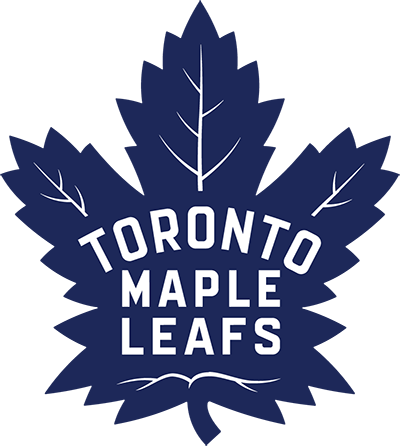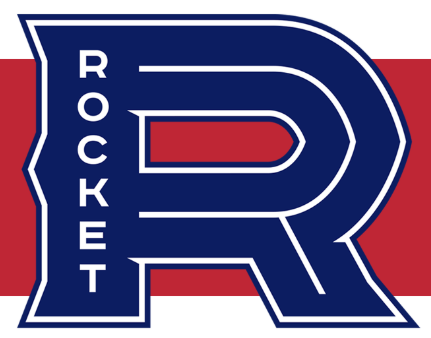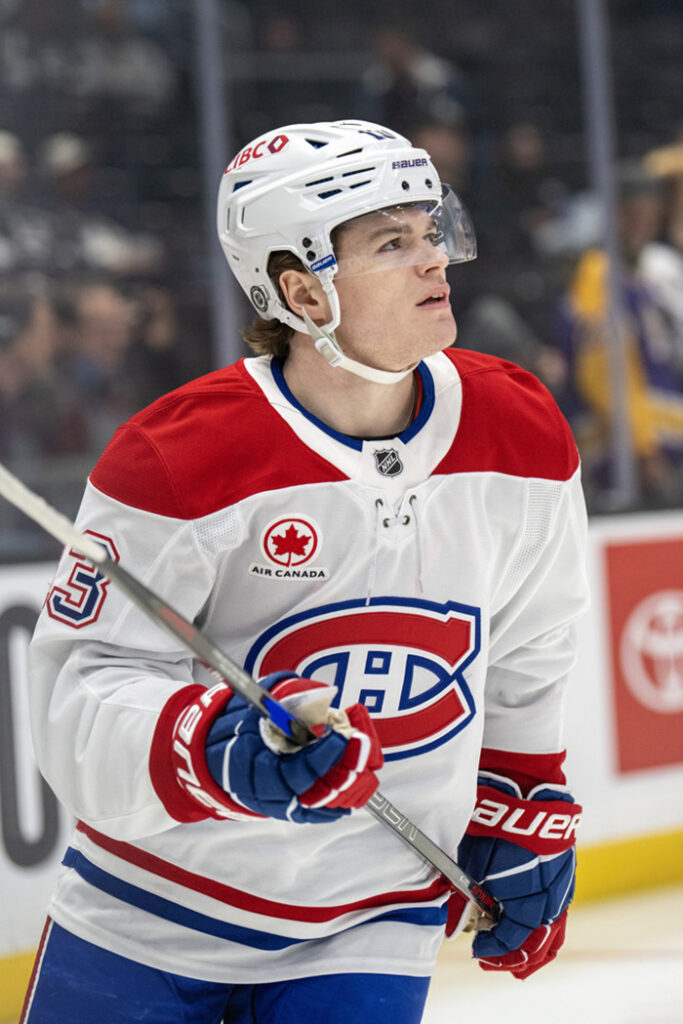It’s too early to determine whether the Montreal Canadiens are a good team or not. They are 4-2 and have at times looked like one of the best in the Eastern Conference, yet have also shown underlying weaknesses. It’s not too early to declare them one of the fun teams to watch in the NHL.
The vibes and overall feeling surrounding them are great. The Canadiens are winning games, have a high-flying offense, have their reigning Calder Trophy-winning defenseman, Lane Hutson, extended on a high-value contract, and their front office was also extended this week. It’s why the Canadiens headline this week’s column.
The Starting Lineup:
- Why the Canadiens’ President-GM combo works better than others.
- Revisiting the 2024 free agency class.
- Tempering expectations for elite prospects.
- Brennan Othmann is on the trade block; he’s not the only one in the AHL.
- Quick Hits: Reactions & Overreactions
If Toronto is the center of the hockey universe, where all the news and big stories start, then Montreal is hockey’s holy land. There’s something special, even sacred, about the hockey market where the city lives and breathes hockey all year round. So, let’s dive in with the Canadiens leading the way, specifically, with their front office being a success story.
Why The Canadiens Have a Successful President-GM Combo (& What Other Teams Can Learn From it)
Jeff Gorton was hired in May of 2021 as the president of the Canadiens, and Kent Hughes was hired in February 2022 as the general manager (GM). Since then, the Canadiens tore down the Marc Bergevin-built team and put together one of the few successful rebuilds. Last season was their first trip to the playoffs, and now, the question is whether they can compete for a Cup or not.
One takeaway from their rebuild that made it a success was the self-awareness. The Bergevin-led team appeared in the Stanley Cup Final in 2021 but they need that team’s success was a mirage. Gorton and Hughes knew they had to tear things down and start all over. The other aspect of their tenure that stands out is their relationship and how the two work off each other’s strengths. Gorton
That is one takeaway about their rebuild that made it successful. They knew they had to tear it down and start all over. However, their relationship and how they work off of each other is also worth considering.
After reaching out to multiple Canadiens team writers, there are five big keys to their success that the rest of the league can learn from.
Stability (& Patience)
The timeline is important to note with the Canadiens, specifically when all the hires were made. They brought in Gorton first, then hired Hughes, who hired Martin St. Louis. It put the president, GM, and head coach on the same timeline, which helped them rebuild on the same page without any extra seasons going to waste.
The Philadelphia Flyers, for example, brought in Daniel Briere as their GM (following the 2023 trade deadline) while John Tortorella was still the head coach. Instead of moving on from Tortorella after the season, Briere waited things out. It’s understandable from the GM’s perspective since they only have so many bullets to spare, and after making one coach the scapegoat and hiring a new one, the pressure shifts to the front office if things go south.
The other issue, one the Flyers experienced, is that Tortorella wasn’t the coach for the rebuild and they fired him following the 2025 trade deadline. Briere hired Rick Tocchet this summer but they are behind schedule as a rebuilding team (it’s year one of the rebuild from the coaching perspective but year three of the Briere tenure).
The Anaheim Ducks have been rebuilding for years, at least since 2020-21. Pat Verbeek is on the hot seat and will likely be fired if the team misses the playoffs. If that happens, it puts the Ducks in a tough spot as they’ll have a new GM with a holdover coach in Joel Quenneville. It puts them on an elongated timeline.
The New York Islanders are falling into the same trap. Mathieu Darche was hired this offseason as the GM but kept head coach Patrick Roy around. Eventually, Darche will want to make his hire to find a coach that reflects his team-building vision (it happens with every GM or front office sooner rather than later). There’s a good chance the Islanders are at the bottom of the Eastern Conference and heading towards a rebuild but if they make a coaching change at the end of the season, they will be behind schedule.
The Canadiens having all three on the same timeline saved them plenty of headaches. The other key is that they’ve stuck with all three. There’s plenty of pressure to make changes, especially in the NHL when coaches are hired and fired all the time. The Seattle Kraken are on their third coach in as many years. The Columbus Blue Jackets, for example, have hired four coaches since 2021 and, ironically, have started seeing success once they had a GM (Don Waddell) and coach (Dean Evason) on the same timeline.
The Canadiens stuck with the trio even with plenty of pressure to replace St. Louis. It’s helped them go from one of the worst teams to a competitive one in a few years.
Communication & Collaboration
Because Gorton and Hughes are on the same timeline, they have the same vision for how the team should be built. Hughes was hired knowing a teardown was coming, and he helped orchestrate it. The Canadiens weren’t competitive, and they both knew it, so they traded multiple veterans, including Tyler Toffoli, Jeff Petry, Brett Kulak, and Artturi Lehkonen, to add future assets.
Both Gorton and Hughes have been on the same page from the start with a patient approach. Usually, the president or GM prefers to speed up the timeline and push the team to the playoffs but they instead let the farm system develop and draft the elite talent to build around. The overhaul of the defense reflects that. The Canadiens traded Alexander Romanov, Jonathan Kovacevic, and Jordan Harris, three young starters on the blue line, knowing they had better ones on the way (like Hutson and Arber Xhekaj).
Most front offices refuse to make the trades or moves needed to be successful in the long run. With Gorton laying out the foundation for how the rebuild should be executed and Hughes putting it to work, the Canadiens have made multiple trades to move them closer to contention.
Structure (& Assigned Roles)
One of the overlooked aspects of a GM is the off-ice work. A GM is often a CEO of a company that both plays the game and has a lot of behind-the-scenes issues. It’s why many struggle in the role despite having a great track record beforehand of drafting or developing. In short, being a GM is usually more than just roster building.
Gorton handles most of the off-ice work and the extra stuff that GMs usually deal with. One scout noted how there’s a lot on a GM’s plate, and having a president helps take off some of that pressure, especially the communication with the ownership group or the fans. Hughes is left to focus on the roster and the players who make it.
With the Canadiens, it’s clear who is doing what. Gorton is the president, Hughes is the one making the draft picks or the trades, or the free agency signings, and St. Louis coached the team that Hughes gives him. Gorton will have a say on some of the moves but ultimately, the GM is the one pulling the trigger. He was the one who drafted Juraj Slafkovsky when many people expected them to select Shane Wright, and he made the decision to acquire Noah Dobson ahead of the 2025 draft.
The Vancouver Canucks, meanwhile, are on the other end of things. It’s hard to tell whether a move is Jim Rutherford’s or GM Patrick Allvin’s doing. The assumption is it’s Rutherford but it’s hard to say. Likewise, the Boston Bruins have Cam Neely and GM Don Sweeney making decision,s and it’s hard to tell which direction the team is heading in because of it (are they competitive or retooling, it’s hard to say).
Vision
The vision was mapped out by Gorton and then executed by Hughes. Gorton’s background with the New York Rangers beforehand allowed him to build the Canadiens a certain why. He can sway Hughes but he’s still in charge of roster decisions. It’s why when a trade offer comes to the Canadiens, there isn’t a buffer or an issue since it goes to the GM, and the president will have an opinion but won’t meddle with the move.
It’s commonplace in hockey, or sports in general, that someone in a higher position tries to be the decision-maker. Often, it’s a hands-on owner but it can even be a helicopter coach. With the Canadiens, they’ve kept to their roles.
What Other Teams Can Learn From Montreal?
The Buffalo Sabres and the Kraken are two of the worst-run organizations in hockey. They both added big names to their front offices, with the Sabres bringing in Jarmo Kekalainen as a senior advisor and the Kraken hiring Jason Botteril as the GM, while moving Ron Francis into the president spot. The power structure has been a mess for years, and it’s possible, a new face with fresh ideas (plus, a president-GM combo) can help turn things around.
The Toronto Maple Leafs shifted away from the duo this offseason, moving on from Brenden Shanahan and keeping Brad Treliving around as the GM. They want one voice to lead them, or as close as they can get to that. Treliving running the show without someone above him will presumably be more effective.
Then there are some teams that might look at Lou Lamoriello as a hire. He is the opposite extreme as a GM since he’s the only voice and the only person who has a say when he’s in charge. He’s seen as someone who can clean up a mess often left by a team that had too many cooks in the kitchen.
Teams are trending away from multiple people in the front office. However, the Canadiens show it can work when everyone is on the same page. It’s why some teams might look for that dynamic, especially if the Canadiens are among the league’s best teams at the end of the season.
Revisiting The 2024 Free Agency Class
It’s always fun to see the free agency grades that are released right after all the signings are made. It’s too early to declare a move a success and know which will work out. Yet, that’s what happens anyway.
Now that a season has passed and most teams are five or more games into the 2025-26 season, it’s easier to see which signings worked out. So, here are the wins and losses from what was a loaded 2024 free agency class.
Sam Reinhart (8 years with $8.6 million average annual value) – Win
At the time, this was seen as a trap signing. Sam Reinhart was coming off a 57-goal season and surely wouldn’t be a game-changer much longer. He’s a pivotal part of the Florida Panthers who is still an elite scorer but also a Selke Trophy-caliber winger.
Jake Guentzel (7×9) – Win
One of the best value contracts in the NHL. Jake Guentzel is a staple of the Tampa Bay Lightning top six and has kept their contention window open.
Steven Stamkos (4×8) – Loss
The Nashville Predators hoped Steven Stamkos would take them over the top. He’s done the opposite. He’s not the star they thought they were signing and instead is an expensive forward who has disappointed in the top six. The only good news is that the Predators can get out of this contract in a few seasons.
Jonathan Marchessault (5×5.5) – Loss
Another bad signing by the Predators, as he was expected to be the top-line center and has underachieved. Although, to be fair, he’s played well to start the 2025-26 season and looks like he’s having a bounce back.
Brady Skjei (7×7) – Loss
This list could have been the rankings of the worst signings just from the Predators. Brady Skjei was awful on defense last season and isn’t looking better this season. This is also the contract that they can’t move and are essentially stuck with. Their best bet is that he finds a steady role as a depth defenseman but it’s a lot of money to leave in a decreased role.
Teuvo Teravainen (3×5.4) – Push
The signing in principle was a bad one. The Chicago Blackhawks signed him and a bunch of veterans with hopes of taking a step forward but instead took a step back. Teravainen’s oddly been the best contract of the group as he’s been a steady presence in the top six and at a good value as well. Ironically, he can be a great player to have on the wing for the long term but the Blackhawks gave him a short-term deal (and will be back at the negotiating table in 2027).
Tyler Toffoli (4×6) – Push
It’s hard to make much of this contract. Tyler Toffoli was brought in as a veteran to mentor the rebuilding San Jose Sharks. By the time they are competitive, he’ll be on the way out and playing his final years in the NHL.
Sean Monahan (5×5.5) – Win
Sean Monahan’s been a pivotal part of the Blue Jackets both on and off the ice. He was a much-needed player as the team battled adversity and played with a heavy heart following the tragic passing of Johnny Gaudreau. On the ice, he’s a top-six center who is helping a rebuilding team take the next step.
Chandler Stephenson (7×6.2) – Loss
The Kraken were hoping to add a top-six center and a scoring presence to a team that needed it. Chandler Stephenson has been a flop and far from the same player since leaving the Vegas Golden Knights.
Brandon Montour (7×7.1) – Push
Another big signing by the Kraken that didn’t move the needle. To be fair, Brandon Montour has been a great player on a terrible team, and with the Kraken off to a hot start, he’s become a vital part of their success.
Elias Lindholm (7×7.7) – Loss
The Boston Bruins thought they were filling the center void by bringing Elias Lindholm in. He was a weak link last season, and one of the reasons the team finished last in the Atlantic Division. The good news is that he’s bounced back this season and become a steady part of the top six, even if he’s not a star-caliber player.
Nikita Zadorov (6×5) – Loss
It’s the same issue with the Lindholm signing for the Bruins, except this hurts the defense. Like Lindholm, he’s bounced back this season but the question is if he can live up to that contract (it’s doubtful).
Chris Tanev (6×4.5) – Win
The Chris Tanev deal was seen as a risky one at the time. The Maple Leafs gave a 34-year-old defenseman a six-year deal. He’s changed the dynamics of the defense and the team altogether. The Maple Leafs have a great defense that can shut down opponents, and it’s Tanev, their top stay-at-home option, who often leads the way.
A subplot to these contracts is that the salary cap is going up. It means that most of these deals are sure to age well, and the Reinhart one, for example, looks better. The rising cap will also allow teams to look at the bad signings and easily move on from them. A 7×7 won’t look so bad in a few years when the norm will be 6×10 or something similar.
Tempering Expectations For Elite Prospects
The Connor Bedard and Frank Nazar roller coaster has been fascinating to watch. The sky was the limit when they were drafted, then last season, they looked like they would never live up to expectations, and now they look like stars again. They’ve combined for five goals and nine assists through seven games to lead the Blackhawks to a 3-2-2 record. The duo is a reminder that prospects take time before they hit their stride.
One thing that’s often referenced in sports is the sophomore slump. Elite players drop off in their second season. It’s not because they take a step back talent-wise as much as opponents know their tendencies and have a target on their back. Bedard, for example, was the player everyone was trying to stop, and he never had a player to take the pressure off of him last season.
Macklin Celebrini, a player many thought would be better than Bedard, has only one goal and four assists through five games. This is his second season in the NHL. Interestingly, Bedard had the same stats (one goal and five assists) through five games of his second season in the NHL.
The reality is that fans must temper their expectations for “generational talents” or prospects who are expected to carry their teams right away. This is particularly an issue for players on rebuilding or terrible teams. Celebrini has minimal help and won’t look great as a result. It takes time for them to not only compete with the Connor McDavid’s or Nathan MacKinnons of the league but it also takes time for the teams to provide a good enough supporting cast to unlock their skills. Bedard has Nazar to help him out, and Celebrini should have Michael Misa or another high draft pick to help in out in a few years. One scout noted how it takes three or even five years to develop, especially when these players enter the league at 18 or 19 years old.
Matthew Schaefer is off to a great start to his career and, without question, will be an elite defenseman in a few years. There’s plenty of optimism surrounding him. Likewise, Gavin McKenna will enter the NHL with as much hype as anyone. It shouldn’t surprise anyone if both players struggle early on. Give them time and they’ll be difference makers.
Brennan Othmann Isn’t The Only AHLer in a Sticky Situation
Elliotte Friedman reported that teams are making calls to acquire Brennan Othmann. The Rangers winger is capable of making an NHL roster but has failed to do so multiple times. At 22, he’s starting to plateau as a prospect and needs a fresh start. The American Hockey League (AHL) is filled with players who fit this bill.
Samu Tuomaala scored 26 goals and added 49 assists in his first two seasons with the Lehigh Valley Phantoms and was an AHL All-Star in 2023. He’s been a healthy scratch in two games and is making minimal impact on the team (while other prospects have leaped past him).
Georgii Merkulov has two goals and five assists through four games and has become nearly a point-per-game player. But, he’s 25 and the Boston Bruins don’t have a spot on their forward unit for him.
Isak Rosen had 28 goals and 27 assists last season and already has three goals and three assists to lead the Rochester Americans. The problem is he’s in a Buffalo Sabres organization with prospects on top of prospects.
Hendrix Lappiere is a skilled winger for the Hershey Bears who has had a few stints with the Washington Capitals. However, he doesn’t fit the mold for what they are looking for in their forwards.
NHL teams are ready to give up on some prospects. When they reach a certain age or are limited in the skills they provide, they are seen as damaged goods, and the teams are looking for the next big thing (the 20-year-old who is still developing). That said, there are other teams that are willing to give them a chance and bet on their upside.
Before the season began, it was all about the goaltenders and which ones would get claimed. Between Michael DiPietro, Clay Stevenson, and Colten Ellis, Ellis was the one whom the Buffalo Sabres snatched from the St. Louis Blues in a savvy add. Goaltenders rarely move during the season, so now, the focus is shifting to the skaters, and which ones can be a part of a trade.
Many fans will either see the above-mentioned players as good AHLers but not capable of making an impact at the NHL level, or they’ll see them as prospects who have peaks. At the same time, a common theme in the NHL is that teams, especially ones in the middle of rebuilds, are looking for young NHL-caliber players. These players are the ones teams will make the calls and the moves for, hoping one of them hits and becomes a star.
Other AHL Notes
The Providence Bruins and Wilkes-Barre Scranton Penguins look like two of the best teams in the AHL. The Bruins have shown minimal weaknesses to start, and the Penguins proved they can win in multiple ways, beating the Hartford Wolf Pack 2-1 on opening night and then defeating the Bridgeport Islanders 6-3 a week later.
The Penguins are a team worth diving into because they have multiple prospects who look poised to help out the NHL team’s rebuild. Sergei Murashov is the standout as he’s stopped 80 of the 86 shots he’s faced in three games. The head coach, Kirk MacDonald, noted after the latest win how he’s become the guy they’ll lean on, even with a reliable backup in Filip Larsson behind him.
The Wolf Pack, meanwhile, are 0-3 and look like the worst team in the Atlantic Division. They host the Springfield Thunderbirds on Wednesday, a team that is 1-2 and also off to a rough start. So, the I-91 rivalry game can determine which team’s season is really in jeopardy early on.
The Rockford IceHogs are 4-1 and possess some of the top prospects in the Blackhawks system. The two standouts are Nick Lardis and Oliver Moore, who have combined for six goals and eight assists through five games (Lardis, it’s worth noting, has a league-leading eight points). So, maybe they’ll also take some pressure off of Bedard soon enough.
Quick Hits: Reactions & Overreactions
The first week was a time when everyone overreacted to everything. Now, the reactions are going the other way.
- The Panthers looked unbeatable through three games. Now, with three losses in a row, they look like a team that can use Aleksander Barkov and Matthew Tkachuk.
- The Red Wings looked like a team in trouble after one game, a 5-1 embarrassment on their home ice. Now, they look unbeatable with impressive wins against the Maple Leafs, Panthers, and Oilers.
- The New Jersey Devils lost their first game against the Carolina Hurricanes, a team that they’ll inevitably face in the playoffs. The game showed how the Devils are good but can’t beat the elite teams in the NHL. Then they defeated the Lightning, Blue Jackets, Panthers, and Oilers in one week.
- The Capitals had a rough opening night loss followed by a four-game winning streak, and so did the Winnipeg Jets, who are now in second place in the Central Division.
- On the flipside, the Calgary Flames had an impressive win to start the season, followed by five losses.
All this to say, the season is a long one. We’re one week in, and every team has at least 77 more games left on the schedule.
